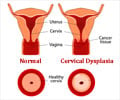An initiative is boosting cervical cancer screening in the South Pacific to enhance women's health.

Major collaboration aims to eliminate cervical cancer in the Western Pacific
Go to source). The University of New South Wales (UNSW) Sydney announced that its world-leading health research institute, the Kirby Institute, has received 25.9 million Australian dollars ($17.04 million) in a donation to support vital cervical cancer screening and treatment services for over 130,000 women in the south Pacific region.
‘#Cervicalcancer is the leading cause of cancer-related deaths among women in the #SouthPacific. Let's work together to raise awareness and improve screening rates. #womencancer #cancerscreening’





The donation, the single largest in the history of UNSW Sydney, was made by global conglomerate the Swire Group and would enable the Kirby Institute to work with regional partners to conduct cervical cancer screening, reports Xinhua news agency. Cervical Cancer: New Insights
Cervical cancer is a type of cancer that affects the cervix, the lower part of the uterus. It's primarily caused by the human papillomavirus (HPV), a common sexually transmitted infection. While HPV infections often clear up on their own, persistent infections can lead to abnormal cell growth, eventually developing into cancer.Regular cervical cancer screenings, such as Pap tests and HPV tests, are crucial for early detection and prevention. Early diagnosis significantly improves treatment outcomes. Additionally, the HPV vaccine is highly effective in preventing HPV infections and, consequently, cervical cancer.
The vast majority, 99 percent, of cervical cancer cases are caused by human papillomavirus (HPV) infection. Most women with HPV infection do not experience symptoms, making screening, which looks for HPV and abnormal cells, crucial for early detection.
The cervical cancer incidence and mortality rate in Australia has fallen by half since the introduction of the government-funded National Cervical Screening Program in 1991.
Advertisement
- Major collaboration aims to eliminate cervical cancer in the Western Pacific - (https://www.kirby.unsw.edu.au/news/major-collaboration-aims-eliminate-cervical-cancer-western-pacific)
Source-IANS














